What is Tabata Training?
Tabata is a high intensity training method for conditioning and fat-burning. Let’s find out how we can do a tabata workout, and what some great tabata exercises are.
Tabata in a nutshell
- Start the clock or timer
- Perform the chosen exercise with as much intensity as possible, and as fast as good form permits for 20 seconds.
- Rest for 10 seconds.
- Repeat for 8 work and rest cycles (a total of 4 minutes.)
Optional: Collapse on the floor at the conclusion of what is likely the 4 hardest minutes of your week!
The most recent research in 2018 about Tabata concluded that:
“…variations of the Tabata Protocol seem to be indicated to provide increases in aerobic power that are similar to traditional aerobic training while being less time consuming.”
That’s what we want – the same benefits as a long (boring) workout in less time!
How do I use the Tabata method?
Using the Tabata technique is simple – all you really need are an exercise and some sort of timing device, like a clock or a smartphone. The best timing device will have a digital display, and ideally an audio warning of when the work interval begins or ends, but all you really need is any clock with a second hand.
What sort of exercise should I use with Tabata?
What sort of exercises work best with Tabata? Honestly – nearly anything! There are some caveats to using exercises which are too risky to perform in a fatigued state, but with some reasonable care you can really do anything involving body-weight, barbell, dumbbell, or kettlebell.
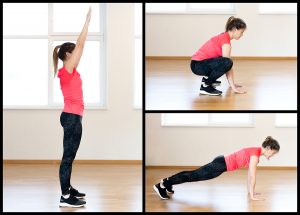
Here’s some ideas, with simple equipment:
- Bodyweight squats
- Push-ups
- Mountain climbers
- Kipping pull-ups
- Kettlebell (or Dumbbell) swings
- Burpees
- Jumping rope
- Almost any bodyweight move
- Sprints
Here’s some ideas if you have more equipment available:
- Bike sprints – assault bikes in particular are excellent for interval workouts.
- Indoor rower sprints
- Treadmill sprints
- Swimming – use a timer that is large, and easy to see or hear.
[thrive_leads id=’5255′]
In CrossFit, you’ll often hear “Tabata This”. What does that mean? It means take whichever exercise is requested and do it tabata style – 8 rounds in 4 minutes.
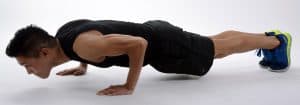
How does the Tabata technique work?
Tabata is an intensity method. The all-out intensity and the ultra-short rest intervals mean you’re going to be fatigued quickly. The short rest interval means you are going to be back to work before you are fully recovered, and when done you are going to have accumulated significant fatigue.
The secret of Tabata is the blow-torch intensity.
Therefore, we consider Tabata to be primarily a conditioning or work capacity training method. It’s not the right framework for pure strength development, and the rapid pace means it’s not really a good skill development method.
Want the health benefits of hours of exercise in just minutes? Recent research shows that high intensity interval methods such as Tabata may do just that. Using controlled research, it’s been found that people using high intensity techniques achieved the same results of those using long, slow cardio – such as jogging for miles and miles. Regardless of whether “long and slow” or intensity was used, researchers found a 20 percent increase in cardiovascular endurance, good improvements in insulin resistance, and significant increases in the cells responsible for energy production and oxygen in the muscles. But while the slow cardio group spent 48 minutes exercising each workout, the intensity group spent just 10 minutes each workout.

What equipment do I need for the Tabata technique?

It’s essential to have a clock, stopwatch, or timer.
The FitAtMidlife free workout timer is a great choice for Tabata workouts. Simply choose the Tabata saved option then click Start. The timer lets you have a great Tabata workout anywhere!
There are many other timing options available from online retailers, as well as in the app stores for mobile devices. The best option will be a standalone timer, that is easy to see from a distance. With such short work and rest intervals, you’ll not want to waste a second checking the time.
You’ll also need the equipment required by your choice of exercise, including:
- Nothing! This technique works great with body-weight exercise.
- Dumbbell – Affordable, near ubiquitous and available in very light weights, this would be a great option for beginners.
- Kettlebell – The kettlebell is available in challenging weights and allows unique movements that are difficult to replicate with other equipment. It’s not always easy to find a kettlebell, as it is somewhat specialized equipment for many gyms.
- Barbell – Really big weight requires a barbell. Having said that, these barbell exercises don’t always lend themselves to rapid execution.
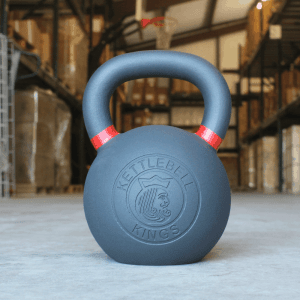
Tabata WOD and Workout Ideas
Need some ideas for a Tabata WOD (Workout Of the Day)? Here’s a few you can try. Scale these according to your abilities. For example, if you can barely lift a large kettlebell, we don’t recommend using this technique as listed below. These are some of our favorites:
- Deadlift your bodyweight
- Pushups – This is a great, no equipment, workout that can be performed in a small space –
like a hotel room. - Kettlebell swings
- Bike – peddle all out for 20 seconds, rest for 10 seconds
- Front squat (with a barbell or dumbbells). This will be insane intensity with almost any weight on the barbell.
- Sprint – run all out for 20 seconds, rest for 10
- Jump Rope – all out for 20 , rest for 10
The origins of the name Tabata come from researcher Izumi Tabata who studied this method in his quest for the optimal fat-burning exercise. The name stuck, and it’s sometimes called the “Tabata Protocol”. The original research paper is available widely on the Internet, if you are interested.

Why choose the Tabata technique?
Here’s some great reasons to make the Tabata technique a part of your routine:
- Flexible – Use this method with nearly any exercise.
- Simple – Minimal equipment needs means you can do this anywhere you have a clock or timer
- Great for group training – groups of trainees can use this method easily. You just need space and sufficient equipment.
- Time efficient – It’s all done in 4 minutes. If you’ve got the willpower to do anything afterwards, you may not have done it with enough intensity!
- Creativity and Fun – The combinations are infinite – and this means more fun (and effectiveness).
When should you not use the Tabata technique?
- Training for pure strength – the ultra-short rest periods and rapid pace mean you can’t really develop pure strength with this method. Build your pure strength in other ways, using the appropriate training, rather you should improve work capacity and ability to execute in a fatigued state with this method.
- Form Fatigue – Be careful with exercises that require exquisite form. The last cycles will involve heavy fatigue. It’s risky to be in the danger zone with heavy weights.
- Skill Training – This is not a method for skill training. There’s too much fatigue and not enough rest.
How Do I Progress the Tabata technique?
Here’s how you progress in Tabata:
- More Reps – Did 10 reps last time? Do 12 this time.
- More Weight or more difficulty – Did you use the small kettlebell last time? Step up to the next size this time. If using bodyweight exercises, use a variation of your exercise that is more intense (for example, pushups vs. feet elevated pushups)
Effective training is more than just burning calories. You’ve got to progress. Whether you are doing more in the same time frame (more reps or more weight) or doing the same work in a shorter time frame, that’s progression.
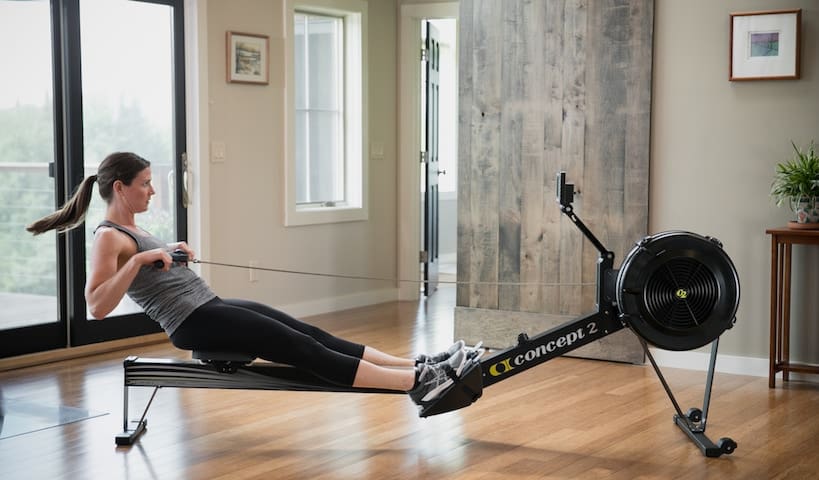
Tabata Tips for Midlifers
At middle age and beyond, it’s important to start conservative and not push the limits too quickly. Ramp up in this fashion, and you’ll be amazed at what you can achieve.
- Tabata what you do well – If you don’t know proper exercise form, such as for the deadlift, squat, etc. do not attempt to Tabata with that exercise. Develop proper, safe form and a reasonable level of work capacity before you go Tabata.
- Be Conservative – Start out at about 1/2 intensity – you can always ramp up the intensity slowly over time. This is a great progression technique and you run the risk of burning out early if you attempt to start at an advanced level.
- Don’t be afraid to substitute – Found a cool Tabata workout online, but it requires something that causes you pain? Sub that bad exercise out for a good one – for example front squats cause anterior knee pain for a lot of midlife folks. Try low bar back squats instead, which are very knee-friendly.
- Lose the Ego – Scale your workouts to match your abilities. Tabata is not the right method to let your ego go out of control. It’s an injury waiting to happen. The smart approach is to scale up to bigger weights conservatively.
Tabata – Go Try It!
Here’s our favorite part – go out and try it and let us know what you think. Comment below, or share with your friends. Tabata involves brutal intensity – but it’s fun and it’s over quick – although it’s not going to feel like it when you are mid-set!
References
- Tabata I, Nishimura K, Kouzaki M, Hirai Y, Ogita F, Miyachi M, Yamamoto K. “Effects of moderate-intensity endurance and high-intensity intermittent training on anaerobic capacity and VO2max.” Med Sci Sports Exerc. 1996 Oct;28(10):1327-30.
- Viana RB, de Lira CAB, Naves JPA, Coswig VS, Del Vecchio FB, Gentil P.“Tabata protocol: a review of its application, variations and outcomes.”, 2018 Apr 2. doi: 10.1111/cpf.12513.
- Talisa Emberts, John Porcari, Scott Dobers-tein, Jeff Steffen, and Carl Foster. “Exercise Intensity and Energy Expenditure of a Tabata Workout.” J Sports Sci Med. 2013 Sep; 12(3): 612–613.
Photo Credits
One photo on this page is property of https://lindyhealth.com/
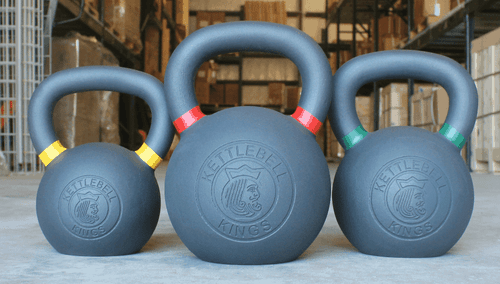

Tim is the founder of FitAtMidlife.com – an avid gym rat for 30+ years, he’s a reviewer of many, many shoes – and founder of the Speed Bag Gathering – the world’s only gathering of speed bag punching enthusiasts. See more gym reviews at Tim’s YouTube channel.



